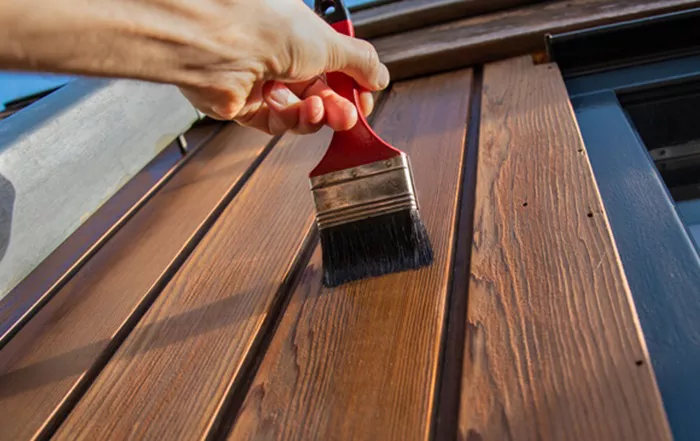Wood is a versatile and attractive material used in various applications, from furniture to decking and structures. However, its natural vulnerability to moisture can lead to warping, rotting, and decay. Waterproofing wood is essential to prolong its life and maintain its appearance. This guide covers various methods and techniques for effectively waterproofing wood.
Understanding the Importance of Waterproofing Wood
Wood, when exposed to moisture, can absorb water, which leads to several issues:
Warping: Wood can swell and bend, distorting its shape.
Rotting: Prolonged exposure to moisture can cause wood to decay.
Discoloration: Water can cause stains and discoloration, ruining the wood’s appearance.
Mold and Mildew: Moist environments can foster the growth of mold and mildew, posing health risks.
Choosing the Right Waterproofing Method
The choice of waterproofing method depends on several factors, including the type of wood, the intended use, and the level of exposure to moisture. Common methods include:
Sealers and Finishes: These are surface treatments that create a protective barrier.
Oils: Natural oils penetrate the wood to provide moisture resistance.
Wood Preservatives: These are chemical treatments that protect against rot and insects.
Epoxy: A resin-based solution that offers a high level of protection.
See also: How To Drill Into Concrete?
Step-by-Step Guide to Waterproofing Wood
1. Preparing the Wood
Cleaning the Wood
Remove dirt, dust, and old finishes using a wood cleaner or a mixture of mild soap and water.
For stubborn stains or old paint, use a wood stripper or sandpaper.
Sanding
Sand the wood surface to create a smooth finish and open up the wood pores for better absorption of the waterproofing agent.
Use fine-grit sandpaper (150-220 grit) for best results.
Drying
Ensure the wood is completely dry before applying any waterproofing treatment. Moisture in the wood can hinder the effectiveness of the waterproofing agent.
2. Applying a Wood Sealer
Choosing a Sealer
Select a sealer based on the wood type and intended use. Common types include polyurethane, varnish, and lacquer.
Application Process
Stir the sealer thoroughly before application.
Use a high-quality brush or a spray gun for an even coat.
Apply the sealer in thin, even coats, following the grain of the wood.
Allow each coat to dry completely as per the manufacturer’s instructions.
Sand lightly between coats for a smoother finish.
Number of Coats
Apply at least two to three coats for optimal protection. Additional coats may be needed for high-moisture environments.
3. Using Natural Oils
Types of Oils
Popular choices include linseed oil, tung oil, and teak oil. Each has unique properties and benefits.
Application Process
Apply the oil generously using a clean cloth or brush.
Allow the oil to penetrate the wood for 15-30 minutes.
Wipe off excess oil with a clean, dry cloth.
Let the wood dry for at least 24 hours between coats.
Apply multiple coats for better protection, allowing ample drying time between each coat.
4. Applying Wood Preservatives
Choosing a Preservative
Select a preservative based on the specific needs, such as protection against rot, insects, or mold.
Application Process
Follow the manufacturer’s instructions for application, which may involve brushing, spraying, or dipping.
Ensure proper ventilation during application to avoid inhaling fumes.
Allow the wood to dry completely after application.
5. Using Epoxy for Maximum Protection
Choosing Epoxy
Epoxy resin is ideal for wood that will be exposed to extreme moisture or used in marine environments.
Application Process
Mix the epoxy resin and hardener according to the manufacturer’s instructions.
Apply the mixture using a brush or roller, ensuring even coverage.
Allow the epoxy to cure completely, which may take several days.
Sand lightly between coats if multiple layers are required.
Maintenance Tips for Waterproofed Wood
Regular Cleaning: Keep the wood clean and free from dirt and debris.
Inspect for Damage: Periodically check for signs of wear, damage, or moisture penetration.
Reapply Waterproofing: Depending on the method used, reapply the waterproofing treatment every few years to maintain protection.
Cover and Protect: Use covers or tarps to protect outdoor wood during extreme weather conditions.
Conclusion
Waterproofing wood is a crucial step in preserving its beauty and functionality. By selecting the appropriate method and following the correct application procedures, you can significantly extend the life of your wood products. Regular maintenance and reapplication of waterproofing treatments will ensure that your wood remains protected from the damaging effects of moisture for years to come.
Related Topics:
-
Top 5 Shop Vacs Of 2024: An In-Depth Evaluation Of Performance And Features
-
Tapcon Screws Vs. Traditional Fasteners: Which Is Best For Your Project?
-
Craftsman Air Compressor Review: Is It Worth The Investment?

